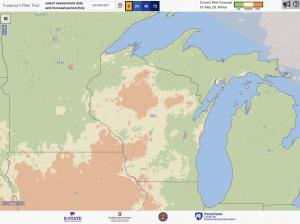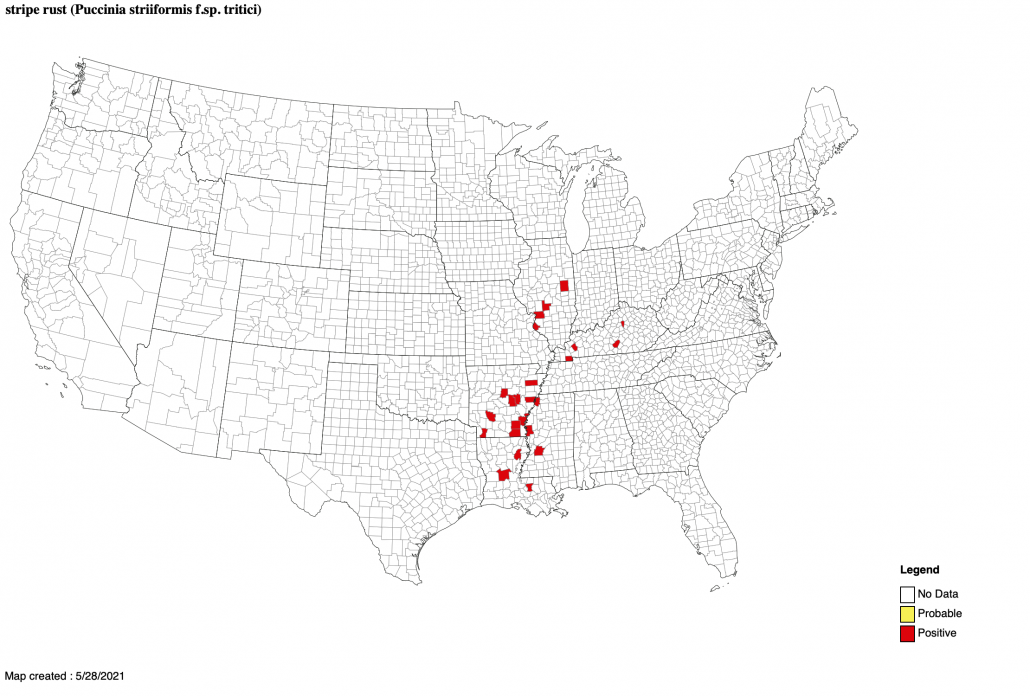Wisconsin Winter Wheat Disease Update – May 28, 2021
Damon L. Smith, Extension Field Crops Pathologist, Department of Plant Pathology, University of Wisconsin-Madison

Figure 1. Fusarium head blight risk for susceptible winter wheat varieties for Wisconsin as of May 28, 2021.
Winter wheat in Southern and South-central Wisconsin is quickly approaching anthesis. By early next week the window of opportunity to apply fungicide for Fusarium head blight (FHB; scab) will be here. Currently the risk for FHB is variable and ranges from low to high depending on where you are in the state (Figure 1). Given the recent rain events and rising temperatures, I think the risk is there for FHB next week. This situation should be monitored closely and a timely fungicide application decision should be made. In my previous post, I talk about how to manage FHB. There are essentially three options for products in Wisconsin for control of FHB. These include Prosaro, Caramba, and Miravis Ace. All also have efficacy against other foliar diseases too. Remember, your window of opportunity to spray for FHB ranges from the start of anthesis (flowering) to about 7 days after the start of anthesis.
Stripe rust still remains unidentified in the state. Confirmed reports of stripe rust are only as close as central Illinois (Figure 2). Continue to remain diligent in scouting for this disease. Remember that fungicides for control of FHB will also be efficacious for stripe rust. Thus, we should be able to “kill two birds with one stone” when spraying for FHB.

Figure 2. Confirmed stripe rust reports for the U.S. as of May 28, 2021.
Reports of powdery mildew continue to come in. Remember that the FHB fungicide treatments will control this disease. So at this point, two applications of fungicide are not needed. A well-timed FHB-focused fungicide app should help slow powdery mildew.
Get out there and scout, scout, scout!




